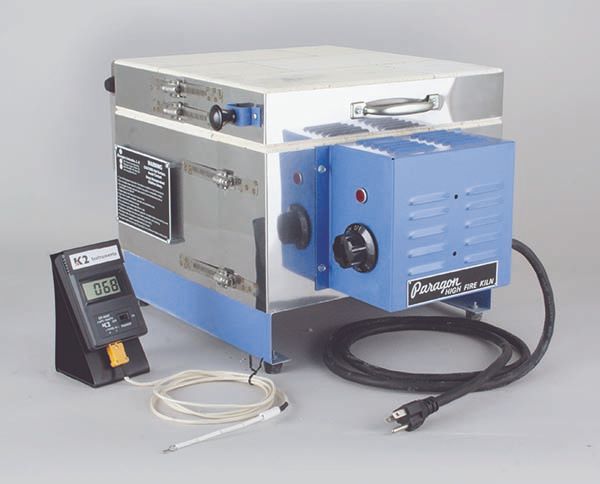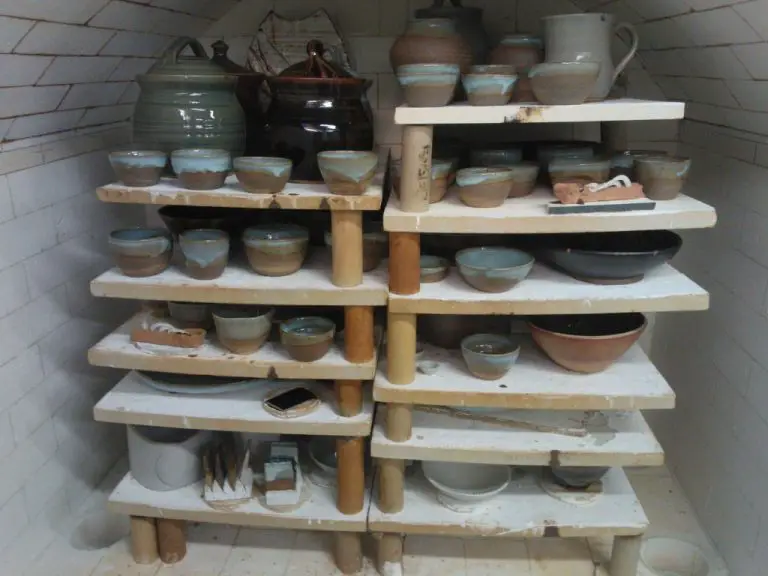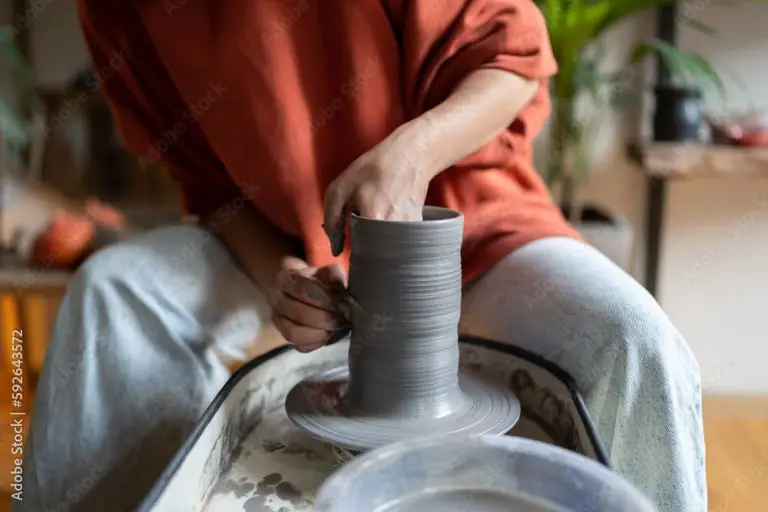What Temperature Is The Paragon Kiln?
Paragon kilns are a popular brand of electric kilns used for firing ceramics, glass, jewelry, and other materials. Founded in 1960, Paragon designs and manufactures a wide range of kilns for hobbyists, artists, and industrial applications (https://kilnfrog.com/collections/ready-2-ship-kilns).
Paragon offers kilns in a variety of sizes and maximum temperature capabilities. Some of their most popular models include the Paragon GL2427-3 Fuego, which reaches cone 10 (2381°F); the SC-2, which goes up to cone 6 (2232°F); and the D896, capable of cone 8 (2282°F). Larger industrial models like the FTH1718 can fire up to cone 12-14 (2500-2600°F) (https://ltt.arizona.edu/sites/ltt.lab.arizona.edu/files/MED%20Paragon%20Kiln%20Wiring%20Diagrams%20and%20Parts%20ID.pdf). With this range, Paragon offers kilns suitable for most any ceramic or glass application.
What is a Paragon Kiln?
Paragon Industries, L.P. is a leading manufacturer of electric kilns and furnaces founded as a family company in 1948 (https://corp.paragonweb.com/about-us/). Paragon kilns are designed for firing ceramics, glass fusing, enameling, and heat treating. They offer a wide range of features to meet the needs of hobbyists, artists, and industrial users.
Paragon kilns allow precise control over the firing process. They are made from high grade materials like ceramic fiberboard, firebrick, and stainless steel to withstand repeated high temperature firings. Advanced digital controllers regulate temperature, heating rate, hold time and other parameters. Safety features include lid locks and temperature limiters (From: https://corp.paragonweb.com/support/what-is-a-kiln/).
Paragon Kiln Models
Paragon offers a wide range of kiln models for various applications and temperature ranges. Some of the main models include:
- Caldera – This is an entry level kiln that reaches cone 10 (2350°F). It’s available in 10, 12, and 14 cubic feet sizes. The Caldera features 3ZonePID advanced controls and comes in both single and three phase power configurations.
- Fuego – The Fuego kilns reach cone 10 and come in sizes from 10-20 cubic feet. They have automatic vent controls and 3ZonePID for precise heat control. The Fuego is an intermediate model kiln good for glass fusing and other projects.
- S-Series – The S-Series are Paragon’s standard ceramic kilns capable of cone 10 temperatures. Sizes range from 18-35 cubic feet. These kilns have automatic venting and come with either a programmable DynaTrol or touch screen Genesis control.
- SC-Series – The SC-Series are designed for glaze and custom firing cycles. They reach cone 12 (2420°F) and come in 18-35 cubic foot sizes. The SC-Series feature either a DynaTrol or Genesis controller.
- E Series – The E Series are Paragon’s top of the line front-loading production kilns. They reach cone 10 and are available from 18-120 cubic feet. The E Series can be paired with automated controls like the One-TouchTM for custom programming.
In addition to these main models, Paragon offers custom designed kilns and special use kilns like jewelry, glass fusing, and glass slumping kilns.
Sources:
https://paragonweb.com/product-category/kilns/
https://paragonweb.com/product-category/kiln-series/
Temperature Range
Paragon kilns are designed to reach various temperature ranges depending on the model and intended firing purpose. Temperatures are measured in degrees Fahrenheit (F) or Celsius (C), with Fahrenheit being the standard scale used for kilns in the United States.
According to Paragon, their kiln models can reach the following maximum temperature ranges (How To Choose A Kiln | Paragon Industries LP):
- 2300° – 2000° F: Low-fire ceramics
- 1400°-1700° F: China painting, glass fusing, glass slumping, enameling, bead annealing
It’s recommended to choose a kiln that can reach at least 240°F higher than your intended firing temperature, to allow for heat uniformity (Paragon Kiln Buying Guide).
Paragon kilns come with preset firing programs to easily fire to various temperatures. Options include Fast Fire, Slow Bisque, Glass Slump, Glass Tack Fuse, Full Fuse, and more. The specialized programs allow optimal firing for the type of clay, glaze or glass being used.
Heating Elements
Paragon kilns use heating elements made of Kanthal A1 wire, an iron-chromium-aluminum alloy known for its high heat resistance and durability at extreme temperatures. The heating elements convert the electrical energy into radiant heat energy that fires ceramics inside the kiln (source).
The power rating and wattage of the heating elements depends on the kiln model. Smaller kilns like the Paragon Fusion series use 120V elements with power ratings between 1225W to 5425W. Larger front-loading kilns utilize 240V elements with wattages from 6000W to 18000W (source).
The heating element layout also varies by Paragon kiln model. Top-loading kilns have elements wrapped around the sides, while front-loading kilns have elements embedded into the floor, sides, lid, and back. This allows heat to radiate into the firing chamber from multiple surfaces for even heating.
Insulation
The insulation used in Paragon kilns is an important factor that determines how efficiently the kiln retains heat. Paragon offers kilns with both brick and fiber insulation. Brick insulation consists of firebricks made from refractory materials that resist high temperatures. Fiber insulation is typically made from ceramic fibers.
Brick insulation tends to be more durable and better at retaining heat, while fiber insulation is lighter and less expensive. Here are the key differences between the two types of insulation used by Paragon:
Brick Insulation:
- Withstands high heat. Firebricks are rated for continuous use up to 2,300°F.
- Provides excellent heat retention due to density and thermal mass.
- Long lasting. Can resist thermal stress and mechanical damage.
- Heavier weight than fiber.
Fiber Insulation:
- Withstands temperatures up to 2,000°F.
- Lightweight and cheaper than brick.
- Offers good thermal insulation.
- Less durable than brick.
Paragon kiln models vary in their insulation thickness depending on the maximum temperature rating:
- Low-fire kilns up to cone 06 have 2.5″ brick or 2″ fiber walls.
- Mid-range kilns up to cone 10 have 3″ brick or 2.5” fiber walls.
- High-fire kilns up to cone 10 have 4.5” brick walls.

Selecting the right insulation is an important factor in efficiency, durability, and performance.
Controllers
Paragon kilns offer a range of controller options to suit different needs and budgets. The main types of Paragon controllers are https://kilnsandovens.com/paragon-controls/:
- Touchscreen controllers like the Sentinel Touch provide an intuitive, user-friendly interface for programming and monitoring kiln firings. They allow for custom ramp/hold programming and provide graphical displays.
- Digital keypad controllers like the Sentry Xpress 5.0 allow for some custom programming and digital displays. They offer more precise control than plain dial controllers.
- Basic dial controllers offer manual knob temperature setting and minimal programming capabilities. They are lower cost but less precise than digital controllers.
Some key capabilities offered by Paragon’s more advanced touchscreen and digital controllers include https://kilnsandovens.com/controls/:
- Multiple ramp/hold custom programs
- Ability to review firings programs and diagnostics
- Digital displays for temperature, rate, time
- Alarms and error notifications
- Kiln vent/damper control
So in summary, Paragon offers a range of control options from basic dial controllers to advanced touchscreen controllers with enhanced programming and monitoring capabilities.
Safety Features
Paragon kilns are designed with safety in mind. Here are some of the key safety features:
-
Lid locks – Most Paragon kilns have lid locks that engage when the kiln is firing. This prevents someone from opening the lid while the kiln is hot.
-
Emergency stop button – There is an emergency stop button on Paragon kilns that allows you to immediately stop the firing process if needed.
-
Overtemperature protection – Paragon kilns have overtemperature protection which automatically shuts off the kiln if it exceeds the maximum temperature limit.
-
Thermal fuse – A one-time thermal fuse will break and turn off the kiln if temperatures seriously exceed safe limits.
-
Vent system – Proper venting allows heat and fumes to escape safely.
For safe operation:
-
Always monitor the kiln while firing and never leave it unattended for long periods.
-
Allow adequate clearance around the kiln and keep combustibles away.
-
Make sure the electrical setup meets safety codes and requirements.
-
Perform regular maintenance and check element condition.
-
Follow the manufacturer’s instructions for proper use.
Maintenance
Proper maintenance is key to getting the longest life and best performance out of a Paragon kiln. Here are some tips:
Regularly check and clean the heating elements. Buildup of glaze or other materials on the elements can cause them to fail prematurely. Carefully scrape off any buildup with a plastic spatula or brush. Replace elements that become warped or develop hot spots. Refer to the manufacturer’s instructions for properly replacing elements. https://m.youtube.com/watch?v=fQA4X25u0GE
Check the thermocouples and make sure they are properly calibrated. Improperly calibrated thermocouples can lead to inaccurate temperature readings. Use a kiln thermometer to double check the accuracy of the built-in thermocouple. Refer to the user manual for calibrating procedures.
Allow sufficient ventilation and keep the outside surfaces clean. Do not block vent holes or allow debris buildup which can lead to overheating. Regularly vacuum out the bottom and sides.
Keep the lid/door properly adjusted and the hinges lubricated. An ill-fitting door with worn out gaskets will allow heat loss and reduce efficiency.
By following the manufacturer’s maintenance recommendations and operating within the proper temperature ranges, a Paragon kiln should last for many years of regular use.
Conclusion
In summary, Paragon kilns are popular ceramic kilns known for their durability, precision, and wide range of available models. Key details include:
- Temperature range from 150F to 2400F depending on the model
- Most models use nickel-chrome heating elements
- Brick and ceramic fiber insulation
- Digital controllers on newer models for programming firing cycles
- Safety features like lid switches and tip-over protection
- Regular maintenance like replacing elements and thermocouples is recommended
For those interested in purchasing a Paragon kiln, check out these additional resources:
- Sheffield Pottery – Authorized Paragon dealer with full product details
- Comparing Kilns – Guide to choosing the right kiln from Ceramic Arts Network
- Paragon Troubleshooting – Tips from the manufacturer on maintenance and repair


